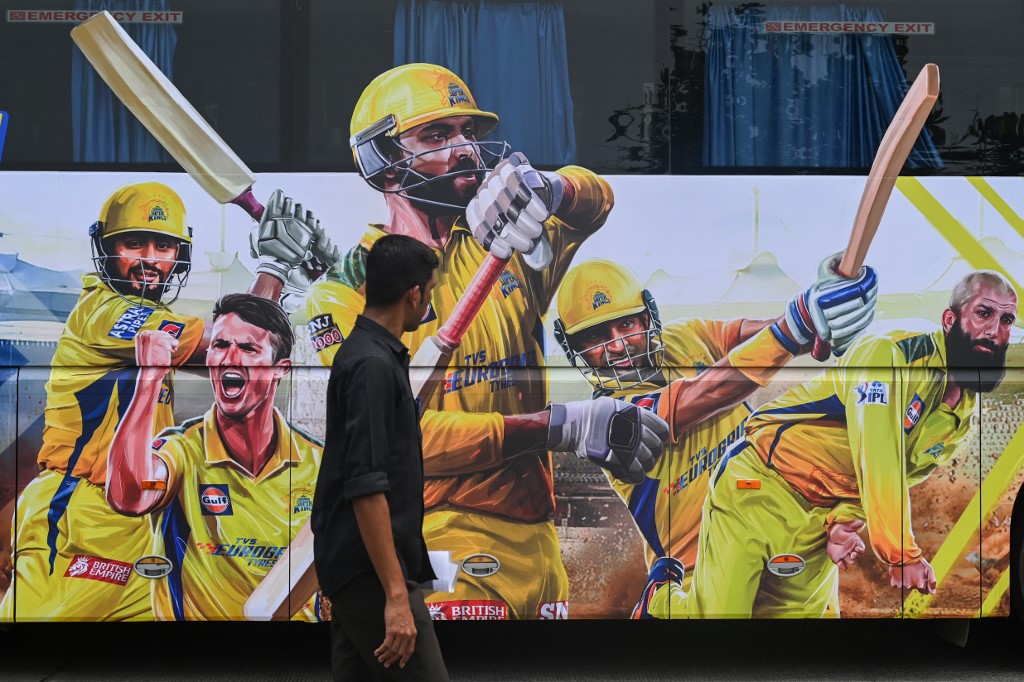Last week a remarkable story broke about a fraudulent cricket competition in India. Simultaneously, it was a reminder of a level of invention and entrepreneurship characteristic of the region and cricket’s historic relationship with betting.
This was prevalent in 17th- and 18th-century England, when matches, hosted by aristocrats but involving hired professionals, were played for significant sums of money. The matches also provided opportunities for lower classes to indulge in betting.
Echoes of this feudalistic structure were evident in the Indian fraud.
Four people are alleged to have cleared a space on a farm in a village in Gujarat, western India. There, they created a cricket pitch, with boundary lines, halogen lamps, and high-resolution cameras. The set up was complete with scores being displayed on a live streaming screen, using computer-generated graphics.
The 20 or so players were hired hands, laborers, and young, unemployed, people, who were paid $5 per game. They wore outfits which sought to replicate those of three Indian Premier League teams — Chennai Super Kings, Mumbai Indians, and Gujarat Titans.
Matches were broadcast on a YouTube channel called IPL. No wide-angled view of play was shown, with focus upon the players. Crowd-noise sound effects were downloaded from the internet supplemented by a speaker who sounded similar to one of the IPL’s actual commentators.
All of these features were designed to provide authenticity, but for whom? The real IPL had concluded on May 29 and this one began three weeks later. Anyone in cricket-playing nations would have known this. It seems that the target market was Russia, not noted for having much interest or ability in cricket.
However, the production of the fake tournament was persuasive enough to entice Russian punters in three cities to part with money via the messaging app, Telegram. The fulcrum point of the operation was the umpire. After bets were placed, the umpire was alerted via walkie-talkie and the batter and bowler were instructed to manipulate a six, four, or to get out. This is not always easy to achieve on demand.
Further details are awaited concerning the prime movers behind the hoax and Indian-Russian links. It does seem remarkable that the punters could not realize that the players were not professional cricketers or that there was a distinct lack of crowd scenes as there normally is in televised matches. Of course, they may not have cared. It was an opportunity to make bets, to gamble. It is not easy for those who do not gamble to understand the mentality and behavior of those who habitually do.
What is easy to grasp is the continued growth of sports betting. Estimates of its size in 2021 sit within a range of $70.23 billion to $89.65 billion, cricket’s share around 10 percent. All estimates predicate a compound annual growth rate of between 10 and 13 percent up to 2030.
Key drivers of this growth are new leagues and tournaments, de-regulatory activity, increasing digital connectivity, and take-up by younger generations, especially with smart-phone usage.
Although the coronavirus pandemic had a negative impact on betting because land-based retail gambling was paused, it did fuel growth in online betting. No reliable estimates of the proportion of sports betting that is offline and online can be cited, but it is widely accepted that online is set to increase its share.
This is recognized on the supply side, where competition is fierce, with sports betting companies seeking to provide engaging and easy to use websites, exclusive deals, enticing welcome offers, and a pleasurable experience.
The amount of data available and greater capacity to analyze it, leads both bettors and betting companies to generate prediction models. Unsurprisingly, there is a growing body of academic papers within India that seek to provide a means of predicting the outcome of IPL matches. A model that really defeats the bookmakers does not seem to have emerged, at least not publicly.
The search for such a model is not just for advancement of academic careers. According to the Public Gambling Act of 1867, all forms of gambling are illegal in India, although offshore ships with betting halls thrive. The law distinguishes between games of chance and games of skill.
In an amendment in 1996, India’s Supreme Court ruled that horse racing was a game of skill and that betting on it was legal. This was because the bettor needs to possess detailed knowledge of the horse, its fitness and training, rider, race location, and underfoot conditions. Curiously, cricket was not regarded as a game of skill.
An information technology act was introduced in 2000 designed to allow overseas betting sites to be blocked. However, the failure of legislation to specifically ban online betting means that Indians can access offshore sites.
Within India, individual states can make their own laws. The northeastern state of Sikkim legalized online and sports gaming in 2008, subject to regulation and licensing. Goa allows live gambling but has not legalized sports betting. More recently, other states, while reinforcing the illegality of offline gambling, have been silent about the legality of online betting.
The outlawing of offline, onshore, gambling has generated a huge Indian underground betting market. This is variously estimated to be worth between $45 billion and $150 billion and represents a significant loss of tax revenue. It is likely to be riddled with fraudulent and irresponsible activity. Eighty percent of this market is estimated to relate to cricket and is heavily weighted toward the IPL. This is set to expand over the next five years, providing even more opportunities for betting.
India’s gambling laws, based on 155-year-old legislation, cannot be considered fit for purpose in an increasingly digitalized world, in which online betting is set for growth. The policies based on the laws are confusing and incoherent and in much need of revision. Currently, they allow global sports betting companies to circumvent national laws through offshore provision. At the other end of the spectrum, a homespun, daring, initiative in western India has shown how easy it is to circumvent these laws on domestic soil.

